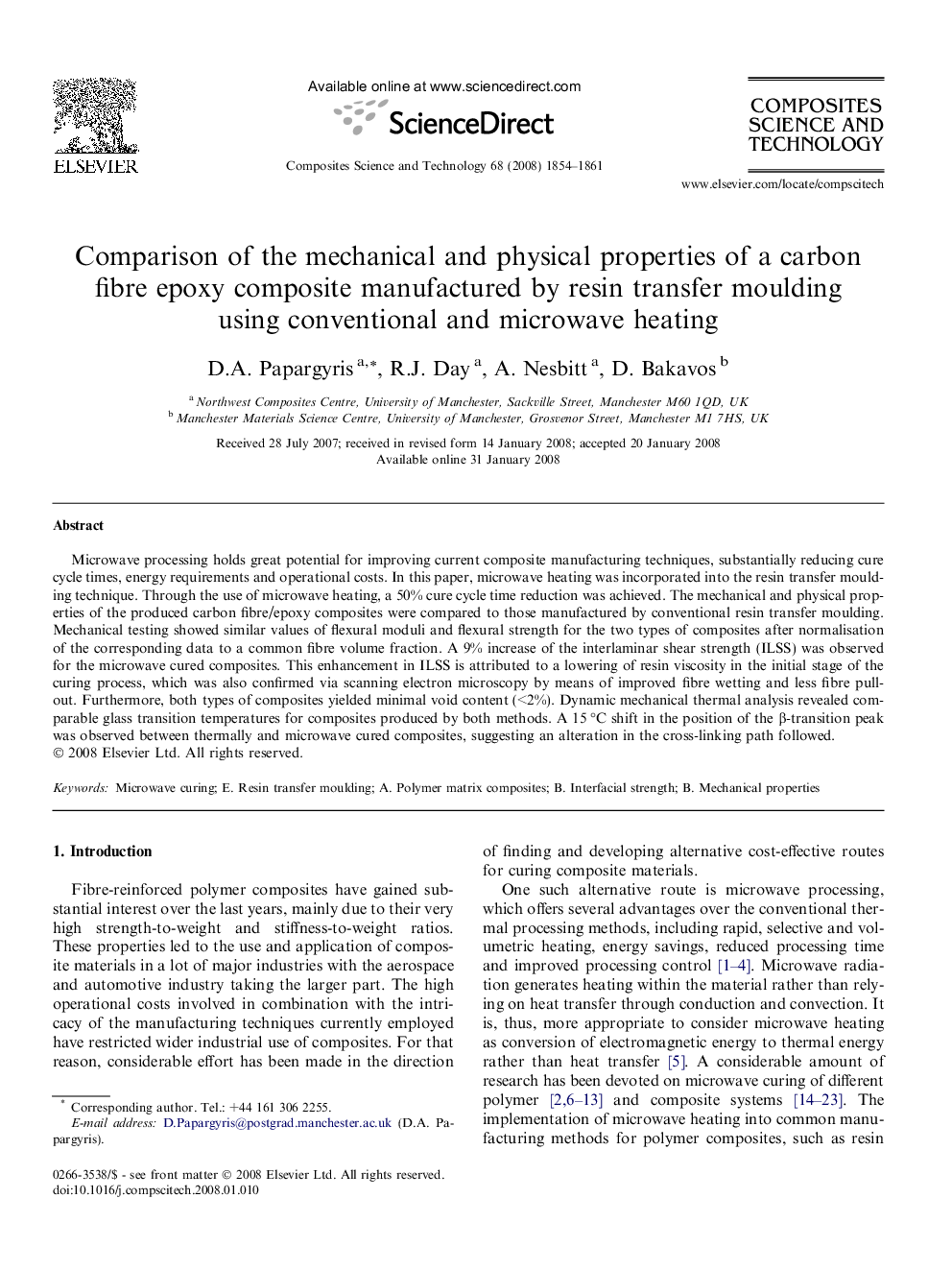| Article ID | Journal | Published Year | Pages | File Type |
|---|---|---|---|---|
| 822234 | Composites Science and Technology | 2008 | 8 Pages |
Microwave processing holds great potential for improving current composite manufacturing techniques, substantially reducing cure cycle times, energy requirements and operational costs. In this paper, microwave heating was incorporated into the resin transfer moulding technique. Through the use of microwave heating, a 50% cure cycle time reduction was achieved. The mechanical and physical properties of the produced carbon fibre/epoxy composites were compared to those manufactured by conventional resin transfer moulding. Mechanical testing showed similar values of flexural moduli and flexural strength for the two types of composites after normalisation of the corresponding data to a common fibre volume fraction. A 9% increase of the interlaminar shear strength (ILSS) was observed for the microwave cured composites. This enhancement in ILSS is attributed to a lowering of resin viscosity in the initial stage of the curing process, which was also confirmed via scanning electron microscopy by means of improved fibre wetting and less fibre pull-out. Furthermore, both types of composites yielded minimal void content (<2%). Dynamic mechanical thermal analysis revealed comparable glass transition temperatures for composites produced by both methods. A 15 °C shift in the position of the β-transition peak was observed between thermally and microwave cured composites, suggesting an alteration in the cross-linking path followed.
